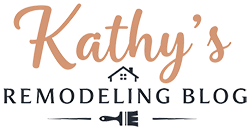So, your kitchen. It’s… big. Like, REALLY big. More ballroom than breakfast nook. While some might dream of expansive counter space and enough room to host a small army, you’re finding the sheer scale of your kitchen makes it feel cold, uninviting, and frankly, a little intimidating. Don’t despair! Taming a too-big kitchen and infusing it with warmth and coziness is achievable. It just takes a bit of planning, a dash of clever design, and a whole lot of smart choices when it comes to materials, layouts, and lighting. This here’s your survival guide to getting a cozier kitchen feeling from what you got.
Understanding the Challenge: Why is My Kitchen So Un-Cozy?
Before we jump into solutions, let's look at whats going on. It's important to know what’s causing this spacious but sterile feeling. Usually, it boils down to these culprits:
- Excessive Open Space: Large, unbroken expanses of floor and wall space can create a sense of emptiness. Think about the echo in a large, empty room.
- Lack of Focal Points: With no clear "center" or attractive feature, the eye wanders aimlessly, further accentuating the size. A kitchen without an island for example or a proper cooking area.
- Cold Materials: Stainless steel appliances, large swathes of granite countertop, and stark white cabinets, they look good and are functional but when combined in large quantities can feel clinical and unwelcoming.
- Poor Lighting: Harsh, overhead lighting without layering creates shadows and emphasizes the vastness. It's like being under a spotlight all the time.
- Monochromatic Color Schemes: A single, dominant color, especially a cool one, can amplify the feeling of coldness and lack of personality.
- Inefficient Layout: A layout that doesn't consider how you actually use the space can lead to wasted areas and a disjointed feel. Think about a kitchen triangle where nothing really is triangle.
Breaking Down the Space: Creating Zones of Functionality
The first step in warming up a large kitchen is to divide and conquer. Think of it as creating several smaller, more intimate spaces within the larger one. Zoning helps define areas and gives each part of the kitchen a specific purpose.
-
Cooking Zone: This is where the magic happens – the range, oven, microwave, and frequently used cooking utensils should be concentrated here. Consider a statement range hood or a decorative backsplash to visually anchor this area.
-
Prep Zone: Dedicated counter space for chopping, mixing, and prepping food is essential. Placing a kitchen island in this area helps create a dedicated area.
-
Cleaning Zone: The sink, dishwasher, and waste disposal should be grouped together. Think about adding a decorative drying rack or a stylish soap dispenser to make this area feel less utilitarian.
-
Eating Zone: Whether it's a breakfast bar, a casual dining table, or a cozy banquette, having a designated eating area encourages people to linger and adds warmth to the space.
- The importance of seating height: While standard counter height is usually 36 inches, bar height counters and islands are 42 inches high. Consider comfortable, stylish bar stools with backs. Standard dining tables have a surface height of 30 inches, so choose chairs with seat heights around 18 inches.
-
Storage Zone: Designated cabinets, drawers, and pantries for food, cookware, and other kitchen essentials.
-
Beverage Zone: A small fridge to house all your drinks. Or a nice espresso machine with its grinder and all other accessories stored next to it.
Layering Lighting: Creating Ambiance and Warmth
Lighting is key to setting the mood in any space, but it's especially important in a large kitchen. Avoid relying solely on overhead lights, which can create harsh shadows and a sterile atmosphere. Instead, layer your lighting to achieve a warm and inviting ambiance.
-
Ambient Lighting: Provides overall illumination. Think recessed lights, chandeliers, or pendant lights. Dimmers are an absolute must for controlling the intensity.
-
Task Lighting: Illuminates specific work areas, such as countertops, sinks, and cooking surfaces. Under-cabinet lighting is invaluable for illuminating countertops. Pendant lights over an island or breakfast bar also provide task lighting.
-
Accent Lighting: Highlights architectural features, artwork, or decorative elements. Think spotlights, strip lights under cabinets, or picture lights. You want these to emphasize the spaces you want, and draw the eye to those spots.
- Warm vs. Cool Light: Choose warm-toned LED bulbs (around 2700K-3000K) for a cozier feel. Cool-toned bulbs (4000K+) can feel sterile and clinical.
- Statement Lighting: A dramatic chandelier or a cluster of pendant lights can serve as a focal point and add personality to the kitchen.
Material Matters: Choosing Warmth and Texture
The materials you choose for your kitchen remodel can have a huge impact on its overall feel. Opt for materials that add warmth, texture, and visual interest.
- Cabinets: Instead of stark white or high-gloss finishes, consider painted cabinets in warm colors like creams, grays, or blues. Wood cabinets, either stained or painted, are always a good choice for adding warmth.
- Countertops: While granite and quartz are popular choices, consider warmer alternatives like butcher block, marble (with its natural veining), or concrete.
- Backsplash: Ditch the plain subway tile for something with more personality. Consider textured tiles, mosaic tiles, or a statement backsplash made from natural stone or wood.
- Flooring: Hardwood floors are always a good choice for adding warmth and character. Tile is a durable option, but be sure to choose a warm color and a textured finish.
- Hardware: Swap out sleek, modern hardware for something with more character. Think antique brass, oil-rubbed bronze, or wrought iron.
- Metals: Consider warm metal accents to inject warmth. Copper pots and pans, brass hardware, or even a copper sink can add visual interest and a touch of luxury.
Color Palette: Creating a Sense of Harmony
Color plays a crucial role in setting the mood of a space. Choose a color palette that is warm, inviting, and harmonious.
- Warm Neutrals: Creams, beiges, grays, and greiges (a blend of gray and beige) are all excellent choices for creating a warm and inviting backdrop.
- Accent Colors: Introduce pops of color with accessories, artwork, and textiles. Think warm reds, oranges, yellows, and greens.
- Two-Tone Cabinets: Consider painting your upper and lower cabinets in different colors to add visual interest and break up the monotony.
- The 60-30-10 Rule: A classic design principle for creating a balanced color scheme: 60% of the room should be the dominant color, 30% should be a secondary color, and 10% should be an accent color.
Furniture and Accessories: Adding Personality and Comfort
Don't overlook the importance of furniture and accessories in making your kitchen feel more cozy and inviting.
- Textiles: Add warmth and texture with rugs, curtains, and upholstered seating. Consider a comfortable kitchen runner, Roman shades on the windows, and upholstered bar stools.
- Artwork: Hang paintings, prints, or photographs to add personality and visual interest. A gallery wall can be a great way to fill a large, empty wall space.
- Plants: Bring life and freshness into the kitchen with potted plants, herbs, or flowers.
- Open Shelving: Display decorative items, cookbooks, and plants on open shelves to add personality and create a more lived-in feel.
- Islands & Peninsulas: Break up the kitchen with an island or peninsula! Islands can provide extra counter space, storage and create a hub for gathering. Peninsulas create a semi enclosed feel!
- Personal Touches: Display family photos, souvenirs, and other personal items to make the kitchen feel more like home.
- Window Treatments Drapes, valances, or roman shades can soften harsh light, add pattern, and create a sense of privacy. Choose fabrics that complement the color scheme and add warmth and texture.
Layout Adjustments: Creating Flow and Intimacy
Sometimes, the layout of your kitchen is the biggest culprit in making it feel un-cozy. Consider making some layout adjustments to create a better flow and a more intimate feel.
- Islands & Peninsulas: Break up the kitchen with an island or peninsula. Islands can provide extra counter space, storage, and a hub for gathering. Peninsulas create a semi-enclosed feel.
- Breakfast Nooks: Create a cozy breakfast nook with a built-in banquette, a small table, and comfortable seating.
- Room Dividers: Consider using a room divider, such as a bookcase or a decorative screen, to break up a large space and create a more intimate feel.
- Corner Cabinets and Seating: Build seating in a corner. A cozy reading space!
- Smaller Appliances: Instead of the biggest fridge consider a smaller, stylish one. Don't get the biggest stove!
Unique Design Ideas: Thinking Outside the Box
Here are a few unique design ideas to consider for taming your too-big kitchen:
- Create a Butler's Pantry: A butler's pantry is a small room located between the kitchen and dining room that provides extra storage, counter space, and a place to prepare drinks and appetizers.
- Add a Fireplace: A fireplace is a surefire way to add warmth and coziness to any room. Consider installing a fireplace in the kitchen or adjacent to the dining area.
- Install a Wine Cellar: A wine cellar can be a stylish and functional addition to a large kitchen.
- Design a Coffee Bar: Incorporate a dedicated coffee bar. Equip it with an espresso machine, grinder, storage for beans, mugs, and accessories, and a small refrigerator for milk or cream. This creates a cozy, inviting zone.
Working with Professionals: Getting Expert Advice
Remodeling a kitchen is a big undertaking, so don't hesitate to seek professional help. Interior designers, kitchen designers, and contractors can provide valuable expertise and guidance.
-
Interior Designers: Can help you with the overall design, color palette, and material selections.
-
Kitchen Designers: Specialize in kitchen layouts, cabinet design, and appliance selection.
-
Contractors: Can handle the actual construction and installation work.
- Get Multiple Quotes: It's always a good idea to get quotes from several different professionals before making a decision.
- Check References: Ask for references and check them thoroughly to ensure that the professional is qualified and reliable.
- Communicate Clearly: Be sure to communicate your vision and expectations clearly to the professional.
Budgeting for Your Remodel: Setting Realistic Expectations
Kitchen remodeling projects can range in cost from a few thousand dollars to tens of thousands of dollars, depending on the scope of the project and the materials you choose. Set a realistic budget and stick to it.
- Prioritize Needs vs. Wants: Focus on the essential elements first, such as cabinets, countertops, and appliances. Then, allocate funds for cosmetic upgrades, such as lighting, hardware, and accessories.
- Consider DIY Options: If you're handy, you can save money by doing some of the work yourself, such as painting, installing hardware, or tiling a backsplash.
- Shop Around for Materials: Don't settle for the first quote you receive. Shop around for materials and compare prices from different vendors.
- Plan for Unexpected Costs: Always set aside a contingency fund for unexpected costs. A good rule of thumb is to add 10-15% to your budget for unforeseen expenses.
Enjoying Your Cozy New Kitchen
By understanding the challenges of a large kitchen and implementing these design strategies, you can create a space that is both functional and inviting. Enjoy the process and have fun creating a kitchen that reflects your personal style and makes you feel right at home. Remember, a cozy kitchen isn't about the size; it's about the feeling it evokes. It's about creating a space where you love to cook, gather, and create lasting memories. A kitchen space that you could spend your days in.

